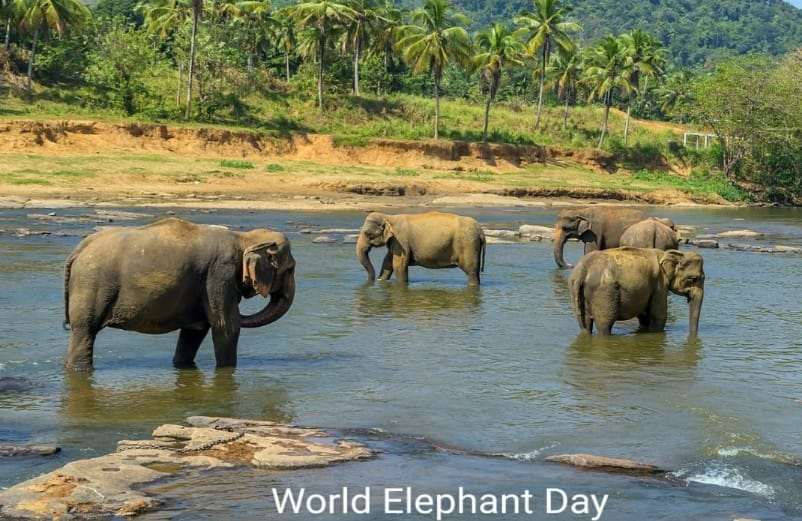Elephants love reunions. They recognize one another after years and years of separation and greet each other with wild, boisterous joy. There’s bellowing and trumpeting, ear flapping and rubbing. Trunks entwine” Jennifer Richard Jacobson
To spread awareness and recognize the importance of world’s largest land mammal ‘Elephants’ in our ecosystem, ‘World Elephant Day’ is celebrated every year on August 12.
This theme for this year’s World Elephant Day has not been announced, however, last year it was ‘Haathi Hamara Saathi.’
Around 90% of African elephants have been wiped out in the past century
Around 90% of African elephants have been wiped out in the past century – largely due to the ivory trade – leaving an estimated 415,000 wild elephants alive today.
Asian elephants are also under threat, having declined by at least 50% in the last three generations. There are only around 45,000 left in the wild.
Thus to highlight the plight of Asian and African elephants the first World Elephant Day was observed on August 12, 2012.
The Thai-based Elephant Reintroduction Foundation, in collaboration with Canadian filmmaker Patricia Sims, organized the event for the day. And since 2012, The Sims has been a leader in World Elephant Day.
The day also focuses on spreading awareness about their preservation and protection from various threats including, poaching, habitat loss, mistreatment in captivity of elephants, especially Asian and African.
According to recent data of WWF (World Wide Fund for Nature), there are roughly 440,000 elephants left on the planet. The WWF also revealed that every year around 15,000 elephants are hunted by poachers. It is not only our responsibility to take measures for their conservation but also create awareness about the possible ‘Elephant Extinction.’
Meanwhile, despite being cultural and religious icons in India, elephants are badly treated by unschooled mahouts. Many elephants fell prey to electrocution, train accidents, poaching and poisoning.
According to the World Wide Fund for Nature, the number of wild Asiatic elephants has dipped below 50,000, which is just 15% of its historic average. Wild Asiatic elephants are primarily found in India and in some parts of Southeast Asia.



